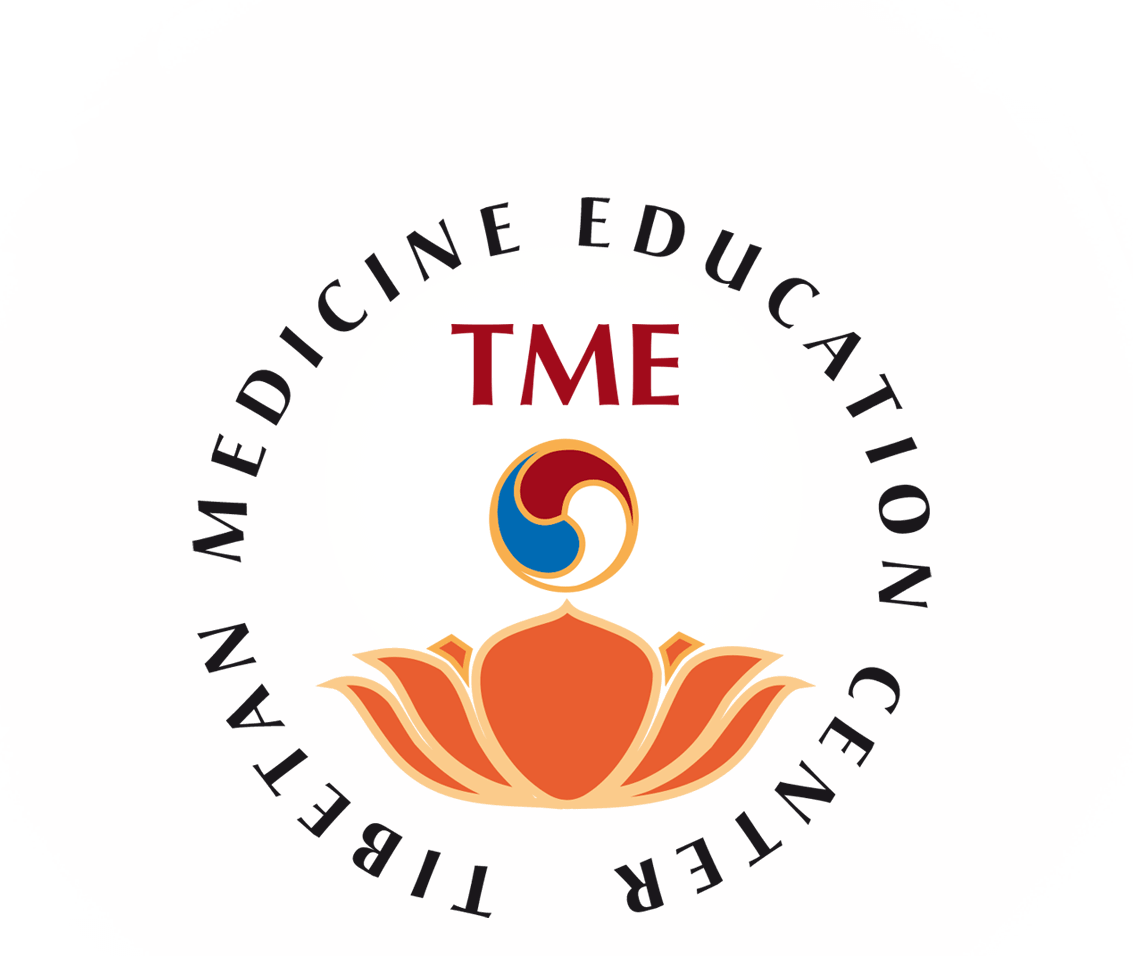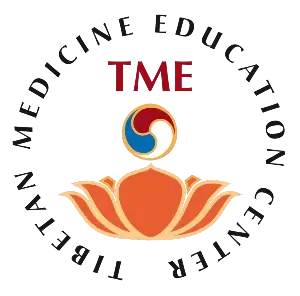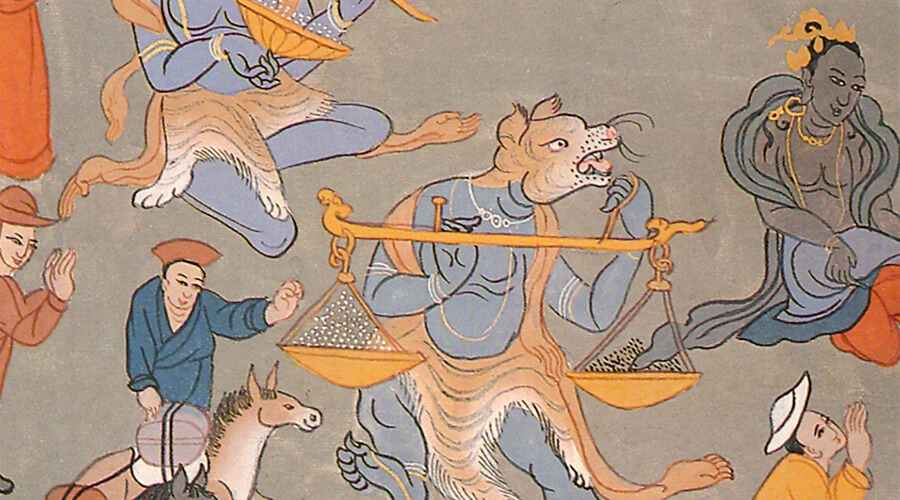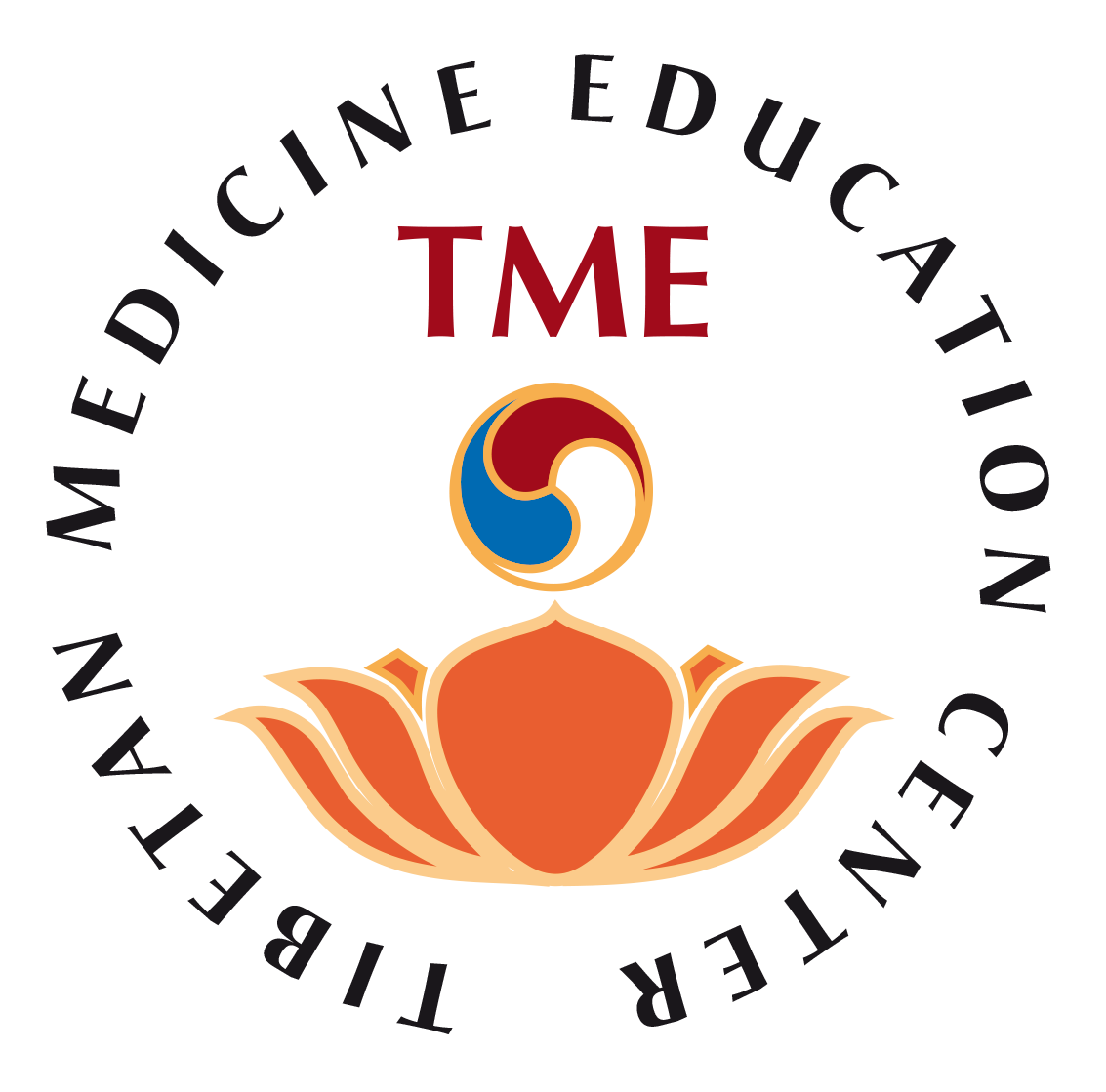Dream and Bardo
Dream interpretation and practice

according to tantra and Tibetan medicine
“Interview with Dr. Pasang Y. Arya”, Sylvie Beguin
What is the place of dream in the Tibetan culture ?
The dream practice and analysis has been used in Tibet since ancient time and is considered as an important part of the medical analysis and mind training. Tibetan Bon faith healers (Ancient shamans) used dreams to read the relationship between the spirits and humans, and diagnose diseases. There were also independent female “Dream tellers“ who were also involved with the government to make predictions to the kings about the politics and prosperity of the country. After Buddhism came to Tibet in the 7th century, dream analyzing culture developed along with medical knowledge and spiritual practice and became a more important subject. Even today, there are emminent spiritual dream tellers and visionaries able to give predictions on future happenings. The practice of dream analysis increased with the use of healthy dream interpretation and dream omens as a diagnosis in medical practice, according to the Gyud-shi (the four medical tantras), and with Yoga tantra as a spiritual practice for transformation of the body/mind.
Are there different views on dreams ?
Dream is the secret language of the mind and phenomena, and a common subject of interest in the East and West. But Western psychologists neglect the religious and spiritual concept, as well as extraterrestrial (planets) and spirits influence on dream, and prefer to adopt the mode of scientific interpretation. The Tibetan dream interpretation is particular. It is mixed with cultural beliefs, which is a background of the psychology, and is firmly influenced by Buddhist philosophy of mind and phenomena.
In sutra [1], dream is not regarded as important by it self, but is used as an important example of illusion. Dream is like an hallucination produced by drugs or other intoxication, without any real basis. In sutra, dream is then used as an analogy of impermanence.
In tantra, dream is also regarded as an illusion but this illusion is considered an experience similar to the Bardo state, or ‘intermediate state‘, experienced by the mind after death. According to Buddhism, from the moment of death until there is a new life, the consciousness enters a state called Bardo. Relating to one’s karma, this state lasts from few minutes or few days to a maximum of 49 days. During the death, the dream-like mental body sees many aspects of its new world with uncertainty and fear. It is a world of lights, colors and sounds, and the mind experiences it like going through nightmares or adventures in the dream. The mind also sees his previous house, family and work, etc and tries to continue to engage in daily life but without being able to interact with others. Such experiences occur and it is very difficult for the consciousness to recognize that death had happened.
The situation is very similar to the dream state, where we feel ‘normal‘, with a body and life that looks real. Friends come to meet us, events happen and all these aspects are perceived as external factors rather than as our own mind’s creation. We have to go through the dream and follow its progression without having much impact on it.
Because of the similarity between the Bardo and dream processes, the tantric Buddhist spiritual practice uses dream as a path of spiritual transformation for the mind in a training called ‘dream yoga‘, to prepare the consciousness to recognize these illusory states for what they are, and so to develop useful capacities for the moment of death.
What about Tibetan medicine and Psychology ?
Here, dream is considered as being a secret language of the mind, but also the messenger of channels blockage due to disorders. Also sometimes divine daka, dakinis, protectors or spiritual masters communicate through dream. Therefore many dreams are beyond common people’s interpretation.
To really become able to understand the dream process according to the Tibetan tradition, one should learn the tantric philosophy, and specially should understand the body, speech (energy) and mind worlds.
Briefly speaking, at a physical level, our body is of course made up of organs, flesh and physical and energy channels, and is, roughly said, composed by the five elements. But in tantra, we look at the body at a subtler level, and then consider five components: the channels, subtle wind, temperature (psychic heat), thikle (‘essence drop‘), and consciousness.
About the channels, three principal ones are specially described, but also 72.000 sub-channels. Channels are like a house, but who does dwell in it? It is the subtle wind. Wind is the main pressure, energy, power, that makes flow the consciousness and all the substances inside the body. The wind is inseparable from the mind. This ‘basic‘ wind is divided into five principal winds; from these winds, five secondary winds ramify; from these ten winds, the energy increases and produces 72.000 winds flowing into 72.000 channels. If the wind functions correctly, the mind functions correctly; if the wind is disturbed, the mind becomes disturbed, because wind is the vehicle of the mind, wind and mind are indissociable, like the sandalwood and its perfume. To function properly, wind needs temperature, produced by the fire.
So, wind is there, it is the energy, it is the pressure that makes the mind move, but what composes it ? Its source is thikle, the subtle material power of the wind, its material substratum. So thikle is the cause of the wind energy, it is a material power. It comes from the food refinement, and is the quintessence of the elements.
The last body/mind component is the consciousness. The mind is immaterial. But as the mind is immaterial, it cannot communicate and function unless it is associated with a material energy. Mind is like the sun, it covers all, and that mind is the main actor behind the manifestation of these four: channels, wind, temperature and thikle. The force of the wind, whose material resource depends on thikle, moves the mind. It is like a rocket: thikle is the benzine, but benzine, if not ignited by fire, cannot launch the rocket.
The mind itself is clear, luminous and one, and it has no color or form, but when it is confronted to an object, it produces six different consciousnesses (eye, ear, nose, tongue, body and mental consciousnesses), which perceive the external objects and phenomena such as form, sound, smell, taste and tangibles.
The mind, thikle and temperature, moved by the wind power, then circulate through the body without stop till the end of the life. This is the subtle level body called ‘vajra body’ in tantra. The mystic mind makes its journey to this mystery kingdom that cannot be discovered by the common mind and soul.
What does happen during the sleeping process ?
All senses are important but the eyes are very important in the sleeping process. Because eyes are our body light and when light is active, the high sleeping darkness cannot occur. When we are awake, and eyes opened, the consciousness is alert, and in interaction with forms, its sensory objects. When our consciousness remains active with the external objects, we cannot sleep. When we close our eyes, the eyes consciousness and other consciousnesses close too and dissolve into the mental consciousness, which means that senses’ organs begin to close and the sleep begins. The consciousness is then absorbed in the inside. This absorption process happens during the sleep, deep meditation, and also during fainting.
So the mind falls into a deep, dark and profound sleep and momentarily goes into an unconscious state. If the mind could remain in its own place (central channel) it would perceive things as they really are. But the mind is moved by the subtle wind. The mind begins to wake up, and the consciousness has no choice but to travel through the channels driven by the wind. The dream starts when the consciousness enters these channels. According to its travel through the different channels, dreams appear differently, taking on different forms and colors, reflecting its journey through a symbolic language.
Whether the channels are clean, healthy or blocked, tight or in bad condition, it has an impact on the consciousness’ travelling, and this is also expressed through the dream. According to the aspect of the dream, Tibetan physicians analyse and use them for the diagnosis.
According to the Tibetan Buddhism and cultural beliefs there could be the following category of concept and dreams: the dreams influenced by culture and beliefs, dreams and visions experienced by the yogic spiritual practitioner, dreams influenced by the environnement, planets and spirits, dreams produced by disease and omens, and premonitory dreams.
Is the dream analysis generally used in Tibetan Medicine ? is it taught during the Tibetan Medicine studies ?
Dream analysis is used a lot in Tibetan medicine. There are some explanations on that topic in the Gyud-shi, the medical tantras, and medical texts, for instance in the prognostication of death, so it is also taught during the studies, but not extensively. Actually, dream analysis develops along with the medical and spiritual practices. For example in the medical side, one asks the patients about their dreams and their physical or mental disharmonies, so the relationships between dreams and disease can be seen more and more accurately.
There are six types of dreams mentioned in Tibetan Medicine that can be generally interpreted: dreams of what was seen the previous days, dreams of what was heard the previous days, dreams of what was experienced the previous days, dreams of fulfilling the spiritual wishes, dreams of fulfilling the normal wishes, dream omens or illness prognosis.
Does a particular disease produce particular types of dreams ?
Yes, definitely. Before, during and after the disease, dreams are quite informative at all stages.
So, when a patient tells you a certain kind of dream, can you infer the causes or location of his disease ?
Yes, the dream can give some precious clues on the disease. But also, to a sensitive and experienced physician in the dream practice, it indeed happens to dream about the patient’s disease before the appointment. If not, the doctor asks to the patient the nature of his dreams, and the dreams very often reveal signs of humoral imbalances, organ’s weakness,…
In dream analysis, what is the importance of the forms and colors ?
The colors and forms of the dreams manifest themselves as reflections of past experiences and elemental colors kept by the mind in Kunshi, the base of the mind, and whenever a strong emotion with similar situation, structure, color and so on appears, the mind recalls the memory and giving colors by the elements of the wind, produces its reflection in the form of a dream. For instance, when we think “white lotus”, some people can immediately see a white lotus in their mind and some are not able to do so because they have never seen the flower or probably there is no clear enough record of it in the Kunshi. Perhaps they only see a “mentally projected lotus” which could be different from the reality because the memory cannot produce it. So when the consciousness visits the different places of the body, it will express this through symbolic pictures. For instance, blocked channels may be reflected as obstructed roads or tiny passages, the liver may be seen in the form of the Australian Ayers rock, hairs like a forest, and so on.
In healthy people, colors that appear in the dream can be related to the elements, humors, and also to the body directions undertaken by the consciousness during the dream. The body is like a mandala. The elements are in their own position; when the consciousness visits these places, the dream is naturally influenced by the reflection of the elements, it is a bit like when you look at the sky, you see it as blue, but the sky itself as no color, it is a reflection. It is the general theory. Then colors are not necessarily to be taken as a sign of sickness.
But in the case of disease, it is different. For example the red color, or also maybe the vision of a fire, can show a Bile disorder sign.
Dream reading is very subtle, as it is a symbolic language. You can never rely one hundred percents on the interpretation because it is very difficult to decipher the codes of the inner world language. There are no mathematical or logical rules fixed in that matter. You have to learn the ancient dream language interpretation and develop your understanding through your own experience so it is a long training. Anyway, to reveal the secret language of dreams and its practice, one should learn them from the tantra and with a master.
- Sutras are a collection of teachings given by Buddha on various subjects. Tantras developed later, around the 10th century, and use special methods of meditation with visualization and mantra recitation of a particular Buddha-figure. According to Mahayana buddhism, tantras were also expounded by Buddha himself but had been kept secret until their exposure.







